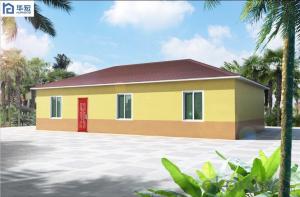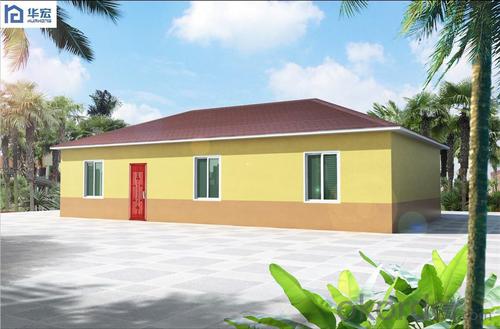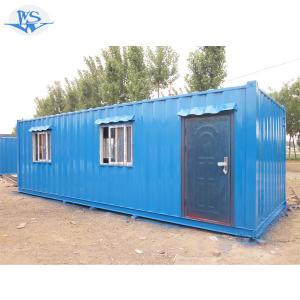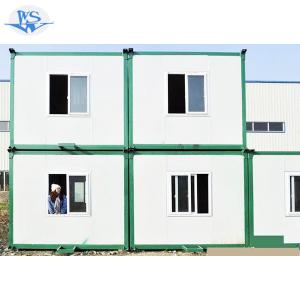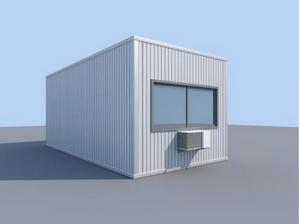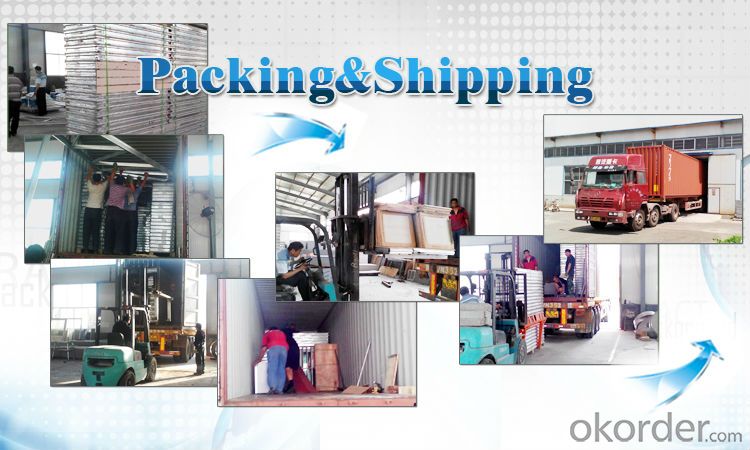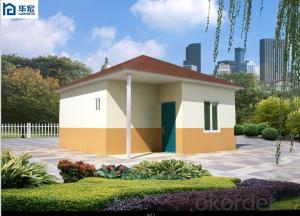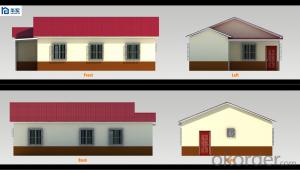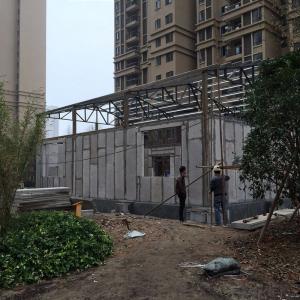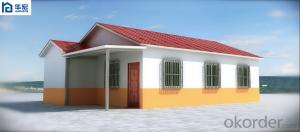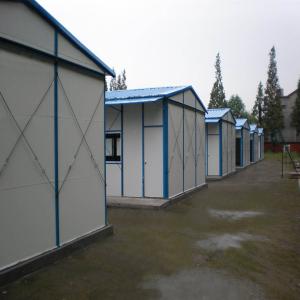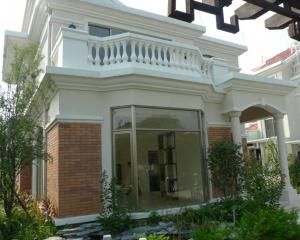Good quality cement house with one floor
- Loading Port:
- China Main Port
- Payment Terms:
- TT OR LC
- Min Order Qty:
- -
- Supply Capability:
- -
OKorder Service Pledge
OKorder Financial Service
You Might Also Like

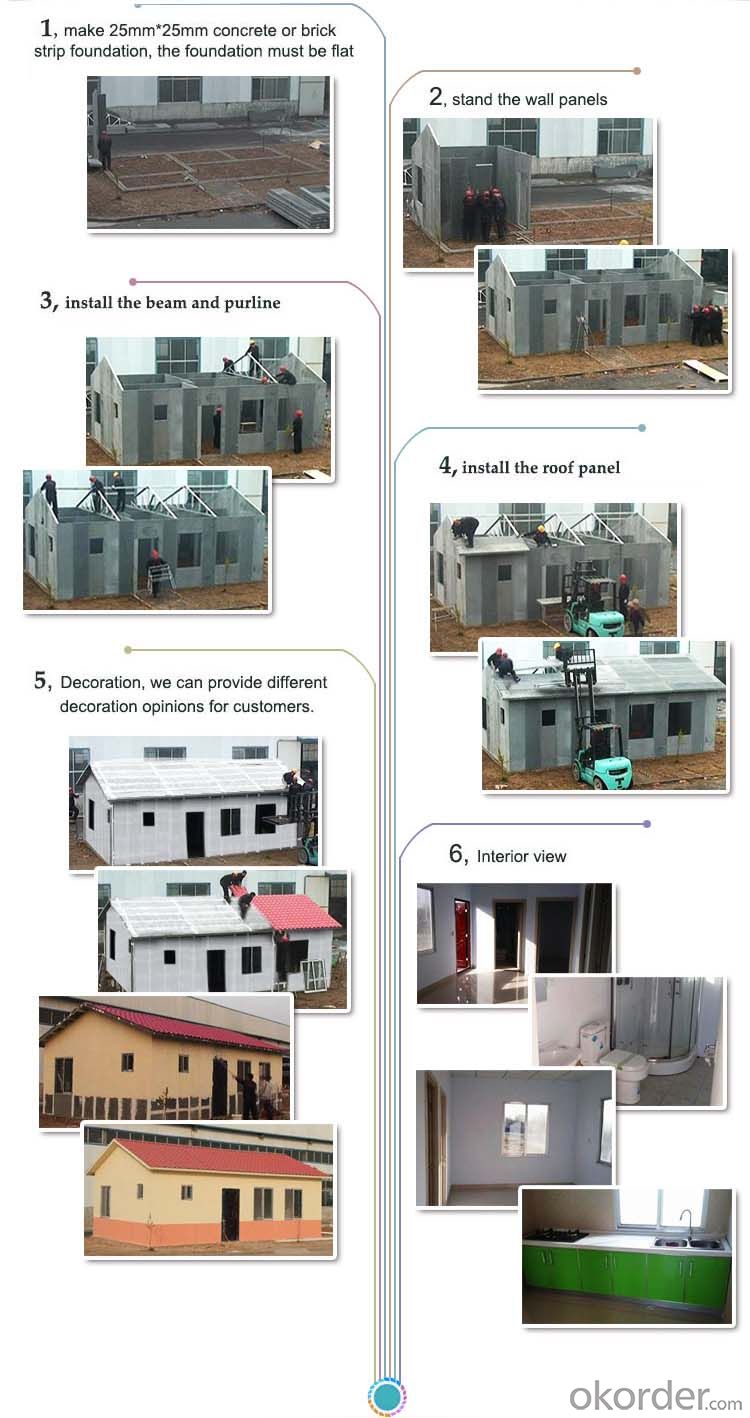
More questions:
1, What's your Payment term:
30% deposit by TT, 70% balance before loading container by TT; 100% LC at sight(total payment over 100,000USD);
2, How about Shipping:
We use 20 feet container and 40HQ container to ship the goods; Usually one 20 feet container can load about 50-60 square meters' house, 40HQ container can load about 120-140 square meters's house.
3, How to become your agent in our country:
First, you can make a report about your market, include the the rules and laws of prefab house, popular house models, target price, and potential sales quantity.
Second, you must place a trial order to act as the display.
Third, after finishing the sample house and getting the local people's feedback, we will give you the agent right in one area with limited time.
Fourth, Please note that we already have agent in Mumbai City India; Marshall Islands, Trinidad and Tobago.
4, Can you help me to purchase other things like furniture or appliance:
Because the customs law, our company can only export prefab house, so we just can purchase very little matched kitchen and bathroom facilities for you in consideration of customs clearance.
5, Can you send workers to help me build house.
Considering the labor cost, safety and visa issues, we suggest to send one or two engineers to guide and train your staffs. You must provide air tickets, hotel, and meal, and 100USD per day for engineer salary.
- Q: Are container houses suitable for military or disaster relief purposes?
- Yes, container houses are suitable for military or disaster relief purposes. These houses, made from repurposed shipping containers, offer numerous advantages in such situations. Firstly, container houses are highly durable and can withstand extreme weather conditions and even earthquakes. This makes them ideal for disaster-prone areas where traditional buildings may be easily damaged. Additionally, container houses are portable and can be easily transported to remote or inaccessible locations, which is crucial for military operations or disaster relief efforts. They can be quickly set up and used as temporary shelters, field hospitals, or command centers. The standardized size and structure of shipping containers also make them easy to stack and arrange in various configurations, allowing for efficient use of space and resources. Furthermore, container houses are cost-effective compared to traditional construction methods. The use of repurposed shipping containers significantly reduces material costs, making them a more affordable housing solution for military or disaster relief organizations working with limited budgets. Moreover, container houses can be quickly assembled and disassembled, allowing for easy relocation or reuse in different areas, maximizing their long-term value. Finally, container houses can be customized to meet the specific needs and requirements of military or disaster relief operations. They can be equipped with insulation, ventilation systems, plumbing, and electrical installations, ensuring a comfortable and functional living space for personnel or displaced individuals. In conclusion, container houses are well-suited for military or disaster relief purposes due to their durability, portability, cost-effectiveness, and customization options. They offer a practical and efficient solution for providing temporary housing and infrastructure in challenging environments, supporting the efforts of military personnel and aid organizations in times of crisis.
- Q: Are container houses portable?
- Yes, container houses are portable. The main advantage of container houses is their mobility and ease of transportation. These houses are made from shipping containers, which are designed to be transported by ships, trucks, and trains. They have standardized dimensions and are equipped with corner castings and twist locks, allowing them to be easily loaded and unloaded onto different modes of transportation. Container houses can be transported to any location and set up quickly, making them a popular choice for temporary or mobile housing solutions. Additionally, container houses can be easily disassembled and moved to a new location if needed.
- Q: Can container houses be built with a contemporary gym or fitness area?
- Yes, container houses can be built with a contemporary gym or fitness area. With proper planning and design, containers can be transformed into functional and modern spaces that can accommodate various purposes, including fitness areas. By utilizing the available space efficiently and incorporating necessary amenities and equipment, container houses can be customized to include a gym or fitness area that meets contemporary standards.
- Q: Can container houses be rented or leased?
- Indeed, one has the option to rent or lease container houses. Numerous individuals or companies extend the opportunity to rent or lease container houses as an alternative housing choice. Opting to rent or lease a container house can prove to be an economical answer for those seeking temporary or adaptable lodging. These residences can be tailored to suit the renter's desires and requirements, and can be effortlessly relocated to various destinations. Furthermore, renting or leasing a container house grants individuals the chance to embrace the minimalist and sustainable way of life that accompanies residing in a container home, devoid of the obligation to make a purchase.
- Q: What is the villa residential property management content?
- engineering maintenance services: owners of the repair service should be implemented 365 days 24 hours repair system
- Q: Can container houses be designed to have a rooftop garden?
- Yes, container houses can be designed to have a rooftop garden. The flat surface of the roof provides an ideal space for planting a variety of plants and vegetables. With proper planning and installation of a waterproofing system, irrigation, and drainage, container houses can support vibrant rooftop gardens that not only enhance the aesthetics but also provide various benefits such as improved insulation, reduced heat island effect, and increased biodiversity.
- Q: Can container houses be designed for small businesses or shops?
- Certainly, container houses are capable of being designed to accommodate small businesses or shops. In reality, container houses have become increasingly popular in recent times due to their adaptability and cost-effectiveness. They can be easily transformed into functional spaces suitable for various purposes, including small businesses and shops. Container houses provide several advantages for small businesses and shops. Firstly, they offer a high level of customization, making it simple to modify them to suit specific business requirements. Containers can be equipped with windows, doors, and partitions to create separate areas for retail, storage, and office space. Moreover, they can be stacked or connected to form larger spaces, allowing for future expansion as the business grows. Furthermore, container houses are relatively affordable when compared to traditional brick-and-mortar structures. This cost-effectiveness is particularly advantageous for small businesses and shops with limited budgets. Containers are readily available, and their modular nature reduces construction time and labor costs. Additionally, they can be transported and relocated, making them suitable for temporary or mobile businesses such as pop-up shops or food stalls. Container houses also offer sustainability benefits, aligning with the growing trend towards eco-friendly businesses. Containers are typically constructed from recycled materials, reducing the environmental impact of construction. Additionally, they can be equipped with energy-efficient features such as insulation, solar panels, and rainwater harvesting systems, minimizing energy consumption and promoting sustainability. In conclusion, container houses can indeed be designed and utilized for small businesses or shops. Their versatility, affordability, and sustainability make them an appealing choice for entrepreneurs seeking flexible and cost-effective spaces to establish their businesses.
- Q: Are container houses suitable for areas with strict building codes?
- Yes, container houses can be suitable for areas with strict building codes. While they may require some modifications and additional permits to meet the specific requirements, container houses can still comply with building codes when built and designed properly. It is essential to work with experienced architects and contractors who are knowledgeable about local regulations to ensure compliance and obtain the necessary approvals.
- Q: What types of materials are used in container house construction?
- Container houses are typically constructed using steel shipping containers as the main structural element. Additional materials used in their construction include insulation materials, such as spray foam or rigid foam boards, as well as wooden or steel framing for interior walls and partitions. Other materials like plywood, drywall, flooring materials, and roofing materials are also used to complete the construction of container houses.
- Q: Can container houses be expanded or modified?
- Container houses have the ability to be expanded and modified. The modular design of these houses makes it easy to expand or modify the structure. It is possible to add additional containers to increase living space, or rearrange walls within the containers to create larger rooms or open floor plans. Moreover, container houses can be stacked vertically to form multi-level structures. Furthermore, it is possible to customize the exterior and interior of these houses by adding windows, doors, insulation, plumbing, electricity, and various design elements to meet specific needs and preferences. In summary, container houses offer great flexibility for expansion and modification, which makes them a versatile housing option.
Send your message to us
Good quality cement house with one floor
- Loading Port:
- China Main Port
- Payment Terms:
- TT OR LC
- Min Order Qty:
- -
- Supply Capability:
- -
OKorder Service Pledge
OKorder Financial Service
Similar products
Hot products
Hot Searches
